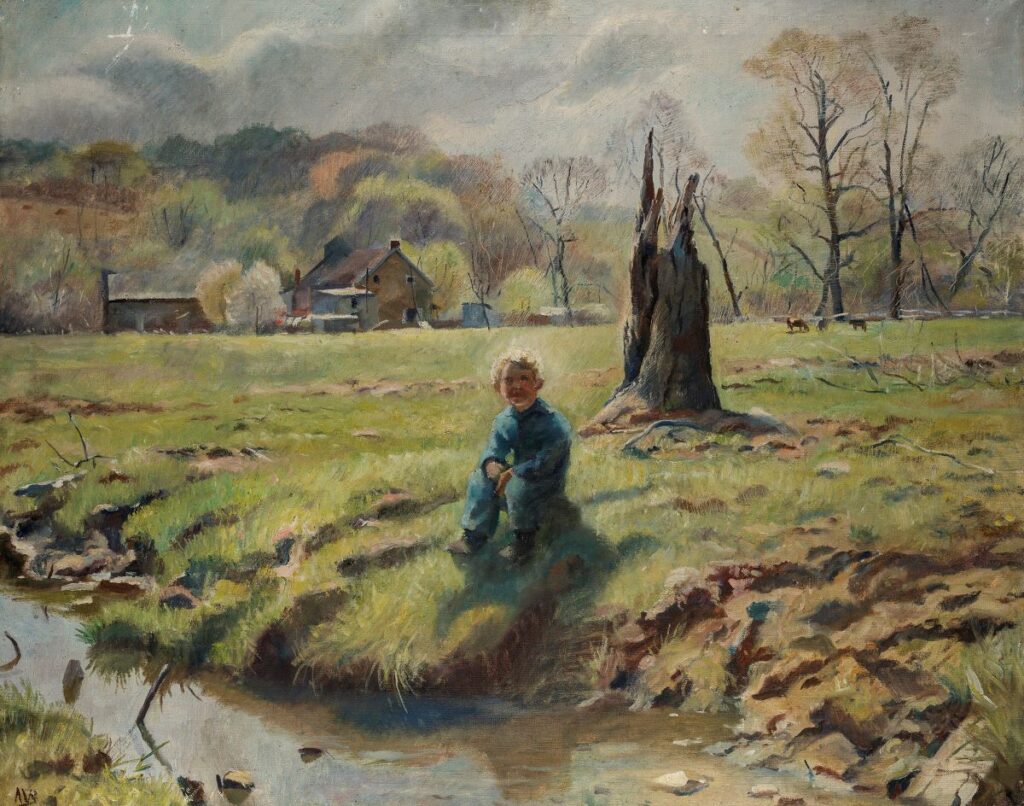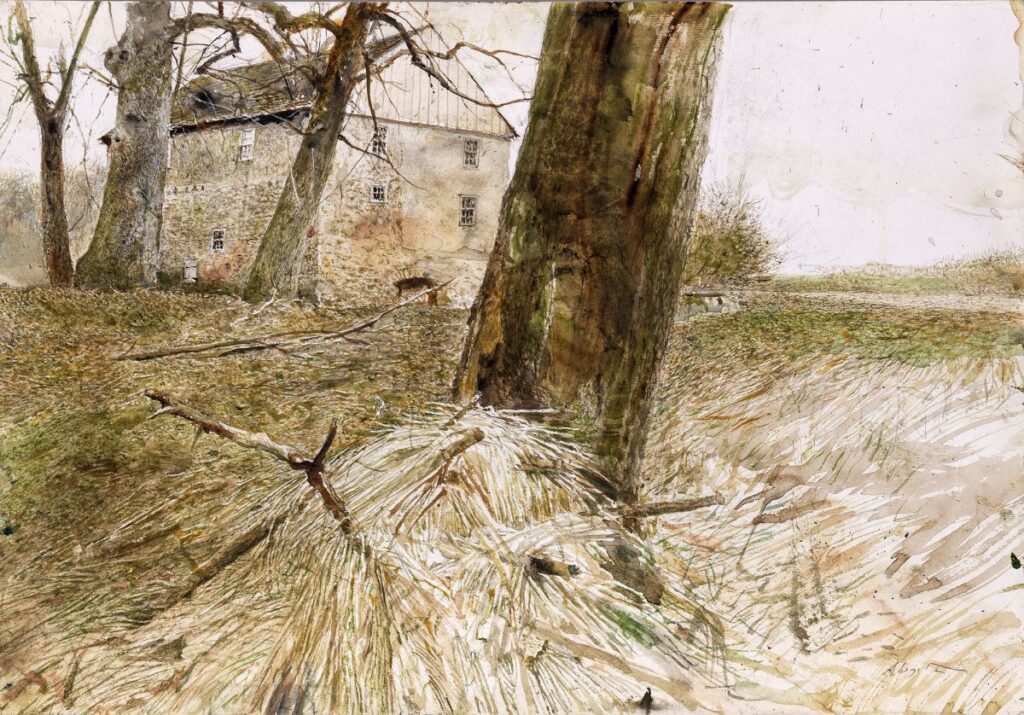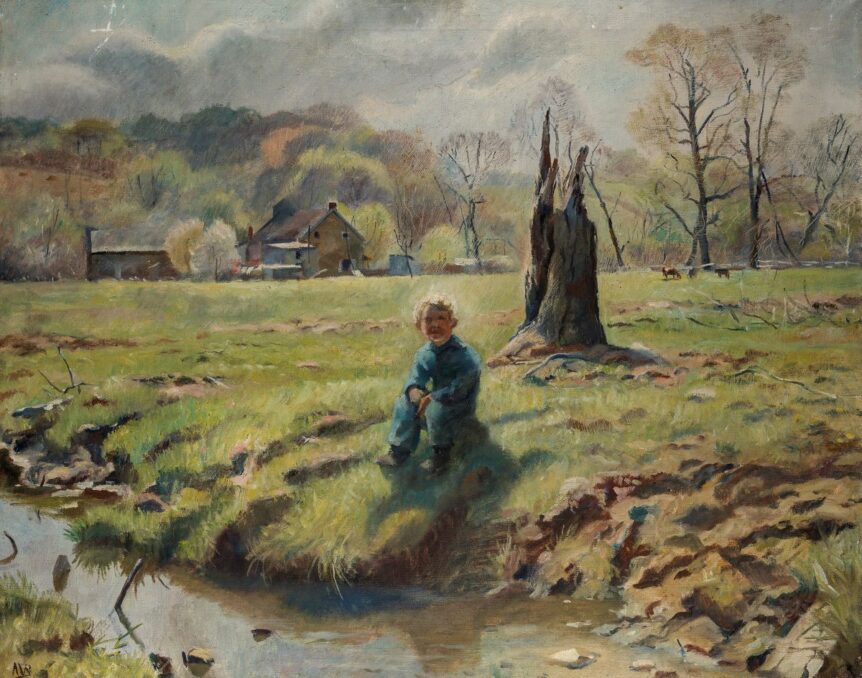
For no artist was that adage more true than for Andrew Wyeth. Over the course of more than seven decades he executed thousands upon thousands of drawings, watercolors, temperas, and oils depicting the landscape, buildings, and people around Chadds Ford, Pennsylvania, where he lived his entire life, and of Port Clyde, Maine, where he and his family summered for many years. His love for the Chadds Ford area is the focus of Andrew Wyeth: Home Places, the inaugural exhibition mounted by the Wyeth Foundation for American Art and on view at the Brandywine Museum of Art to July 13. We spoke to William L. Coleman, the newly appointed curator of the foundation and director of the new Wyeth Study Center.
Your position was only recently created. Can you briefly describe its origins and what’s involved?
My position as Wyeth Foundation curator and director of the Wyeth Study Center is the product of the vision of Betsy James Wyeth, the artist’s wife, and was launched by her estate plan on her death in 2020. She transferred ownership of the Andrew and Betsy Wyeth Collection of some seven thousand Andrew Wyeth artworks that she had acquired and meticulously documented to the Wyeth Foundation for American Art and placed it under the professional management of the Brandywine Museum of Art. This formerly private collection—now available for study and loan—includes everything from intimate early drawings to some of the best-loved works in watercolor and tempera that Wyeth ever created, like Wolf Moon and Night Sleeper. In short, it’s a fairly comprehensive representation of the vast range of one of the most remarkable legacies in American art. I oversee our two research and collections care facilities—at the Brandywine and on the campus of the Farnsworth Art Museum in Maine—and our work in exhibitions, advocacy, and completion of the Andrew Wyeth catalogue raisonné.

The current exhibition spans seven decades of Wyeth’s extraordinarily productive career, including one of his very earliest works, The Miller’s Son of 1934. What can you tell us about this oil and its place/role in the exhibition?
Home Places is comprised entirely of objects from the Andrew and Betsy Wyeth Collection, most of which have never before been exhibited. This treasure trove offers a chance to see how the artist kept on finding fresh inspiration and new layers of emotion, association, and abstraction in the same small group of old houses around Chadds Ford over many years of living in that landscape. The Miller’s Son is a prime example of this: a previously unseen work by a seventeen-year-old exploring the landscape of his birth and never dreaming he would someday come to own the local landmark he depicts in the background, Brinton’s Mill. Wyeth’s early works in oil on canvas like this one are little known and show the lessons learned from his father, the iconic artist-illustrator N. C. Wyeth.
Focusing on one or two works around Brinton’s Mill, the Wyeths’ home, tell us how they exemplify the artist’s vision, ethos, and interests.
From The Miller’s Son at seventeen to the previously unseen watercolor Noah’s Ark Study made at age eighty-seven, the 1720s gristmill was one of Wyeth’s most important subjects and crystallizes many aspects of his work, not least of which is the importance of his creative partnership with Betsy. She led the acquisition, restoration, and furnishing of the property with her serious study of eighteenth-century Pennsylvania architecture, furniture, and ceramics, for which The Magazine ANTIQUES was a key source. Through her work, the mill and its surrounding granary and millhouse were transformed into a comfortable family home as well as a continuing source of inspiration for Andrew Wyeth’s paintings. In addition to the romance of the austere old mill building and Wyeth’s interest in the early Quaker settlers of the region, a primary fascination of the site for the artist was the Revolutionary War’s Battle of Brandywine because of the fact that a British contingent crossed the Brandywine Creek on the property at a key point in the conflict. Through their collaboration at the mill, Andrew and Betsy Wyeth created an inhabited landscape in which the lines between past and present blurred.

